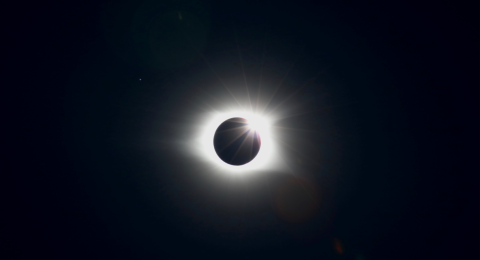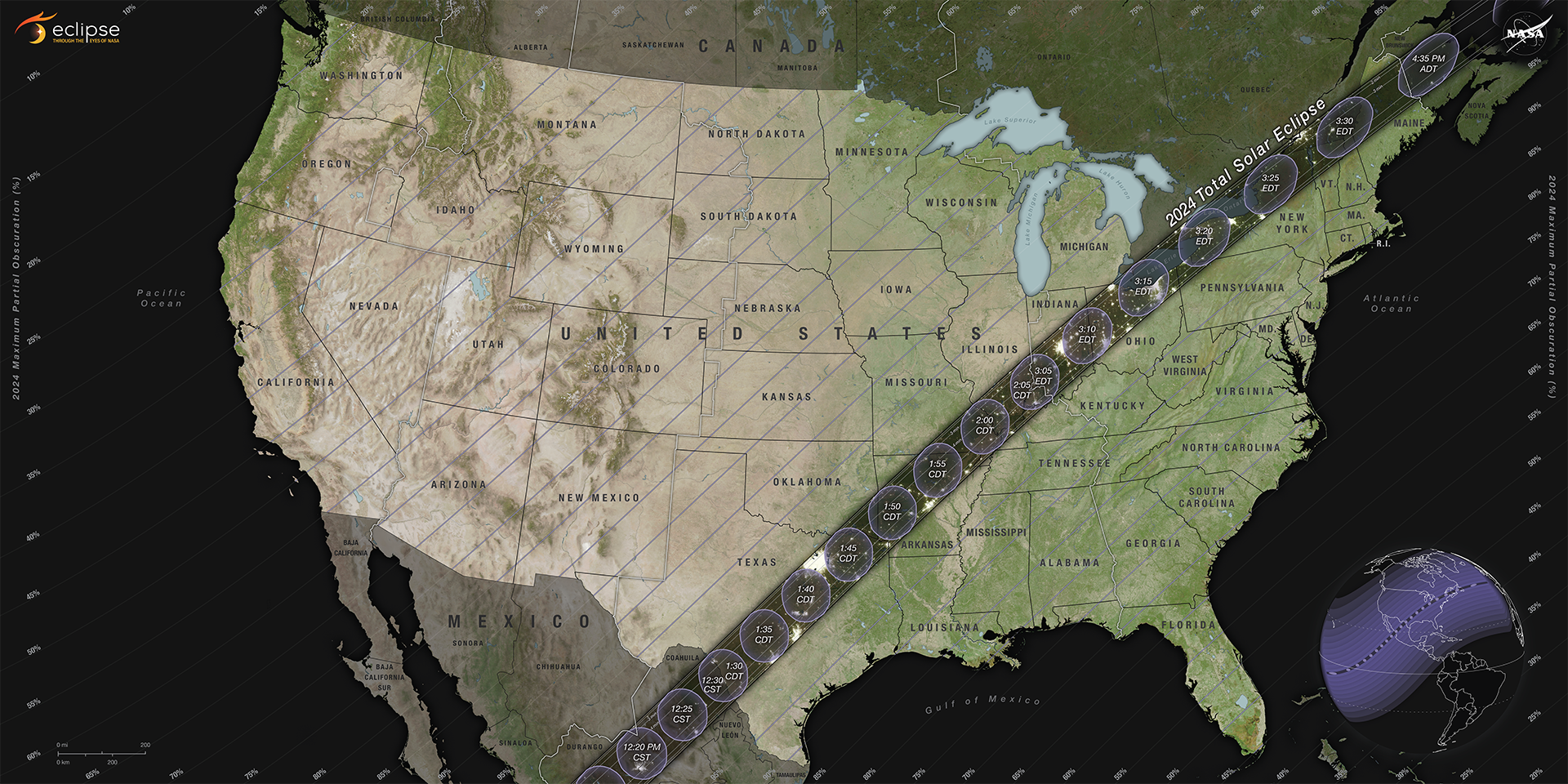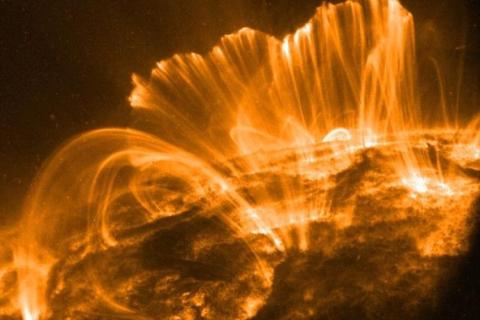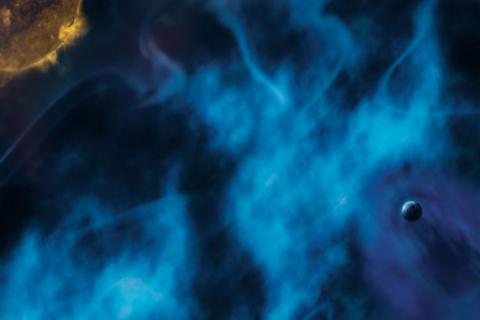Eclipse

When
| Starts | 2:15 p.m. |
| Mid-Eclipse | 3:30 p.m. |
| Ends | 4:39 p.m. |
Magnitude

What is a solar eclipse?
When the Moon's orbit positions it between the Sun and Earth, it blocks the light of the Sun, casting a shadow on the Earth. On April 8, 2024, this shadow will fall on the northern part of New Hampshire, resulting in a solar eclipse.
How to View an Eclipse with UNH
Safety
PROTECT YOUR SIGHT
Never Look Directly at the Sun
-
View the Sun through eclipse glasses or a handheld solar viewer during the partial eclipse phases before and after totality.
-
You can view the eclipse directly without proper eye protection only when the Moon completely obscures the Sun’s bright face – during the brief and spectacular period known as totality. (You’ll know it’s safe when you can no longer see any part of the Sun through eclipse glasses or a solar viewer.)
-
As soon as you see even a little bit of the bright Sun reappear after totality, immediately put your eclipse glasses back on or use a handheld solar viewer to look at the Sun.

Credit: NASA/Bill Ingalls
Did you know the University of the New Hampshire has a Space Science Center?
At the UNH Space Science Center, faculty and students work on cutting-edge reseach areas like astrophysics, coronal mass ejections, cosmic rays, experimental space plasma, lighting physics and space plasma theory. They explore the ionosphere, the Earth's magnetosphere, our solar system and the farthest reaches of the universe.
Examples from the UNH Space Science Center
HelioSwarm
HelioSwarm is a new NASA mission, led by UNH researcher Harlan Spence, to unlock the mystery of how turbulence heats space plasma, which is matter that makes up key elements in the Universe, like the Sun, stars, solar wind and even the Earth's upper atmosphere. See the video simulation of space plasma below.

Earth’s atmosphere plays major role in creating space storms
Research findings will help improve predictions of storms that disrupt technology, power grids. Click to read the space storm story.

Solar Windfall
UNH to lead $250M NASA mission to study turbulence in solar wind and space plasmas. Click to read the Solar Windfall story.
Recommended Links for Further Learning from Others
NH Total Solar Eclipse 2023 from NH Department of Business and Economic Affairs, Division of Travel and Tourism Development
14325: What is an Annular Eclipse? Eclipse Animation Elements
Eclipse Path of Total Solar Eclipse on April 8, 2024
Where & When | 2024 Total Eclipse – NASA Solar System Exploration
Science in the Shadows: NASA Selects 5 Experiments for 2024 Total Solar Eclipse
Meet the Creators of NASA's Newest Eclipse Art
Total solar eclipse of April 8, 2024 over Mexico, the USA, and Canada
Solar Viewing Projector (from NASA)
How to Make a Pinhole Projector to View Solar Eclipse (from NASA)
How To Build a Solar Eclipse Viewer! (College of Science at Louisiana State University)
Observing the Sun for Yourself ( by Stanford SOLAR Center)
*Inclusion or exclusion of commercial names, logos, products, services or websites does not equate or imply endorsement by UNH Cooperative Extension or the University of New Hampshire.
